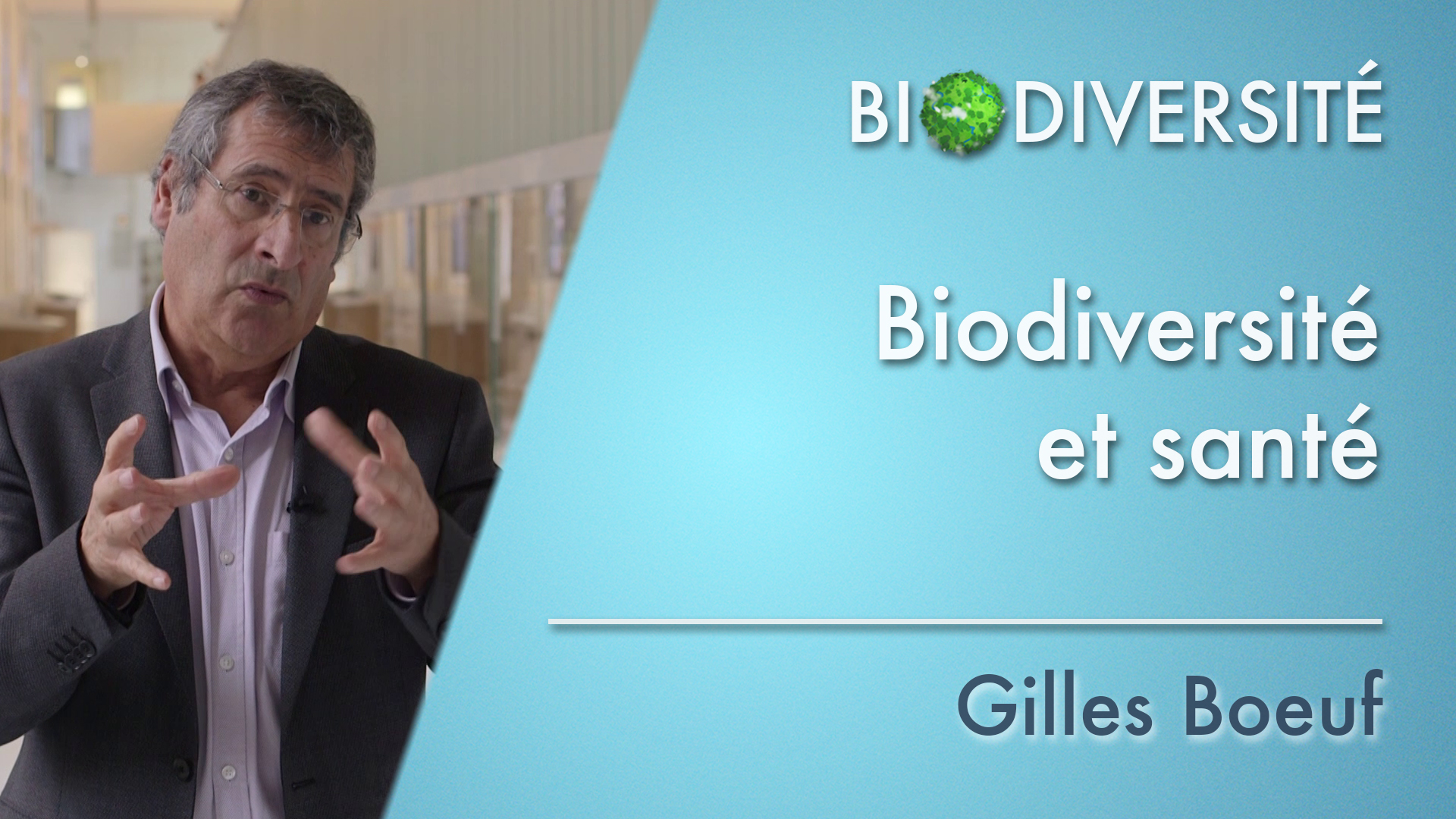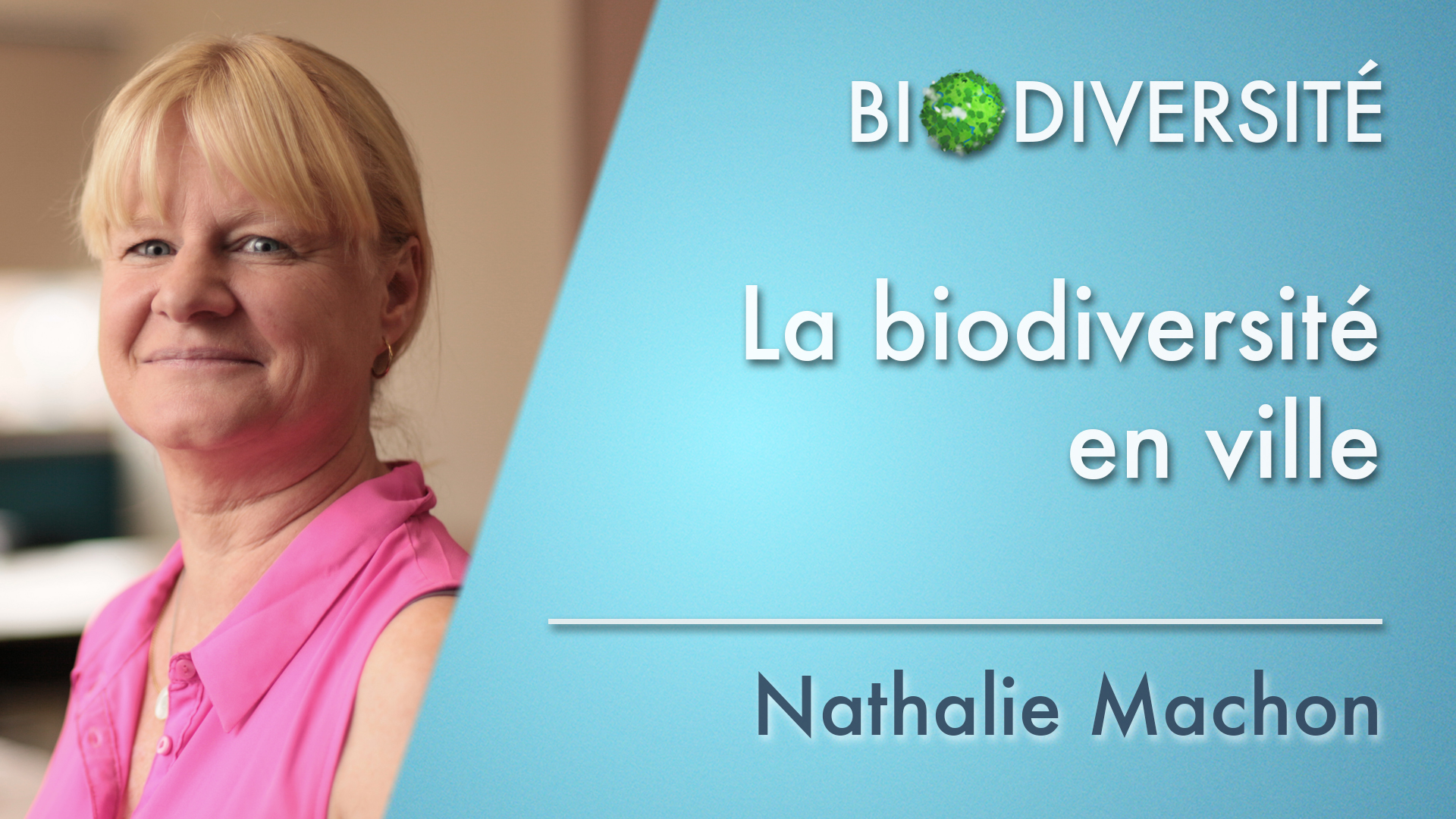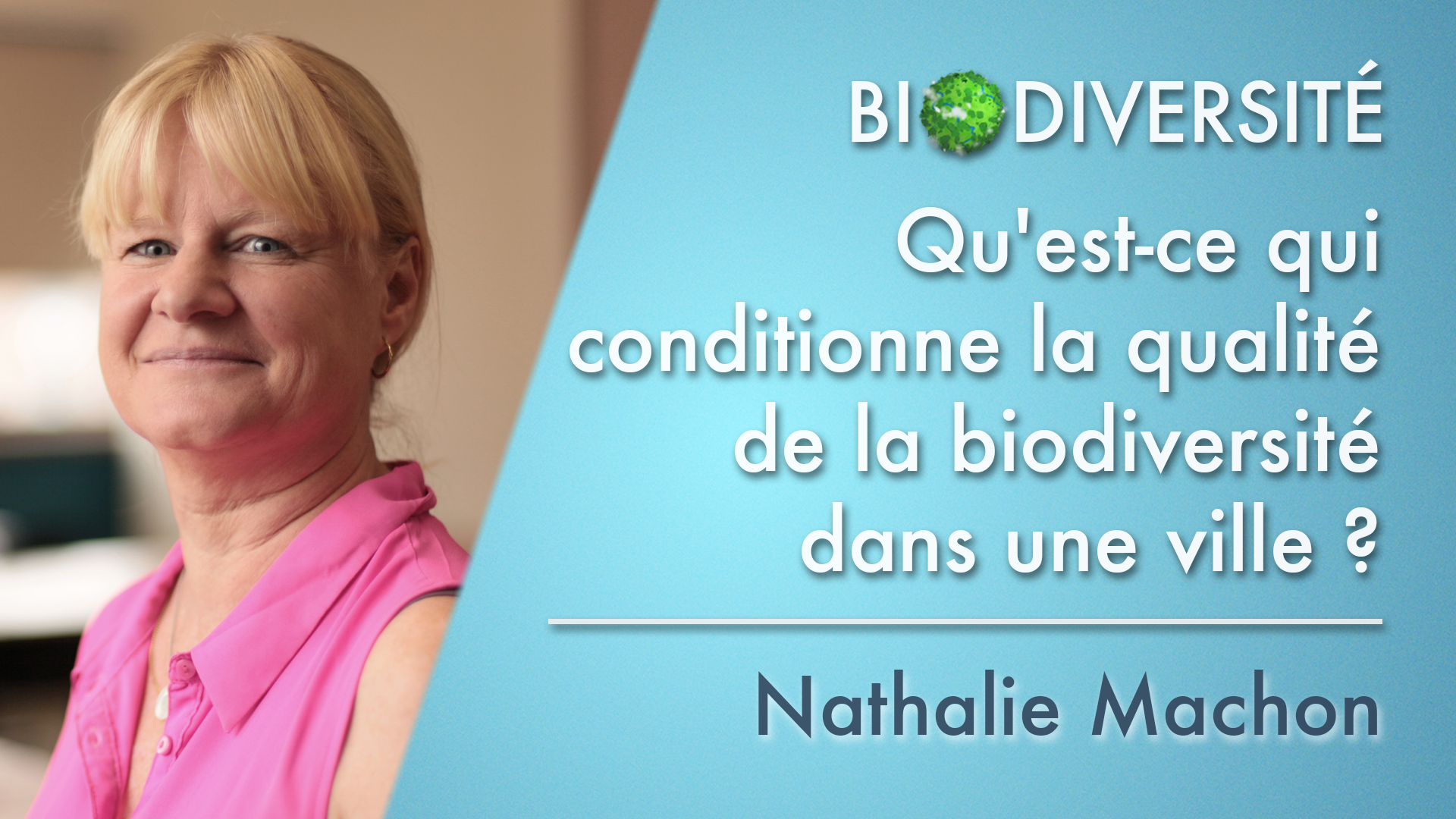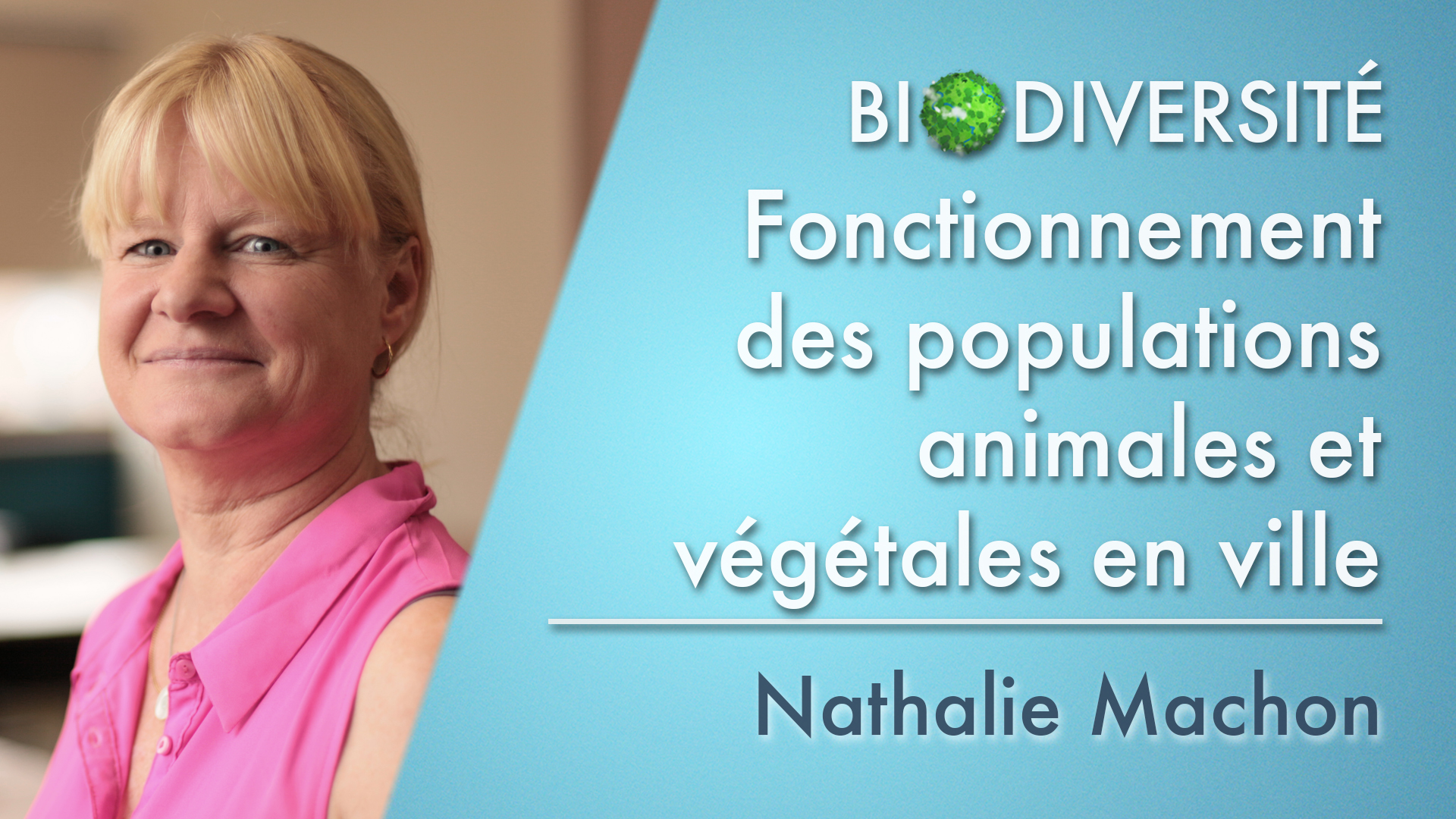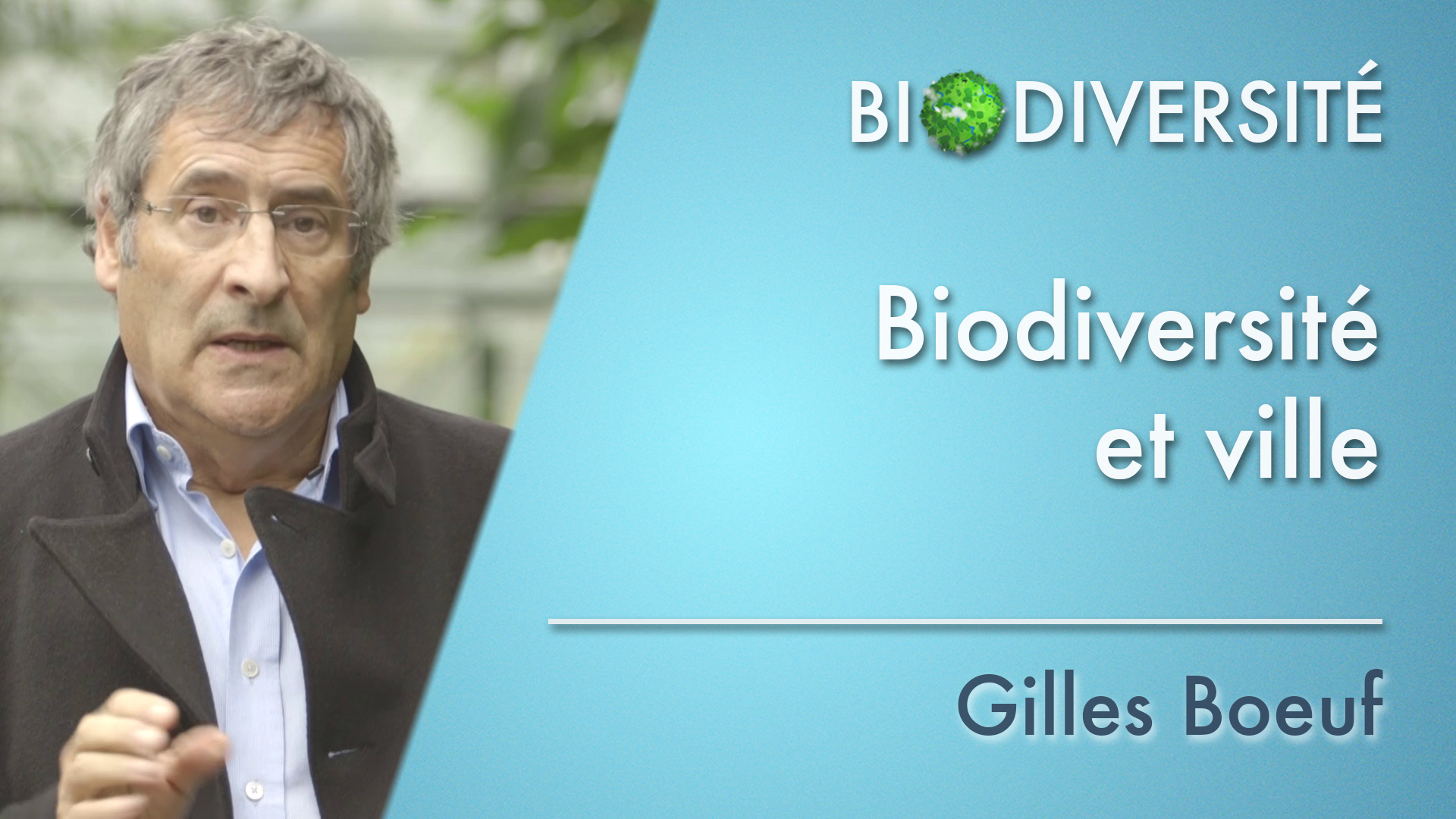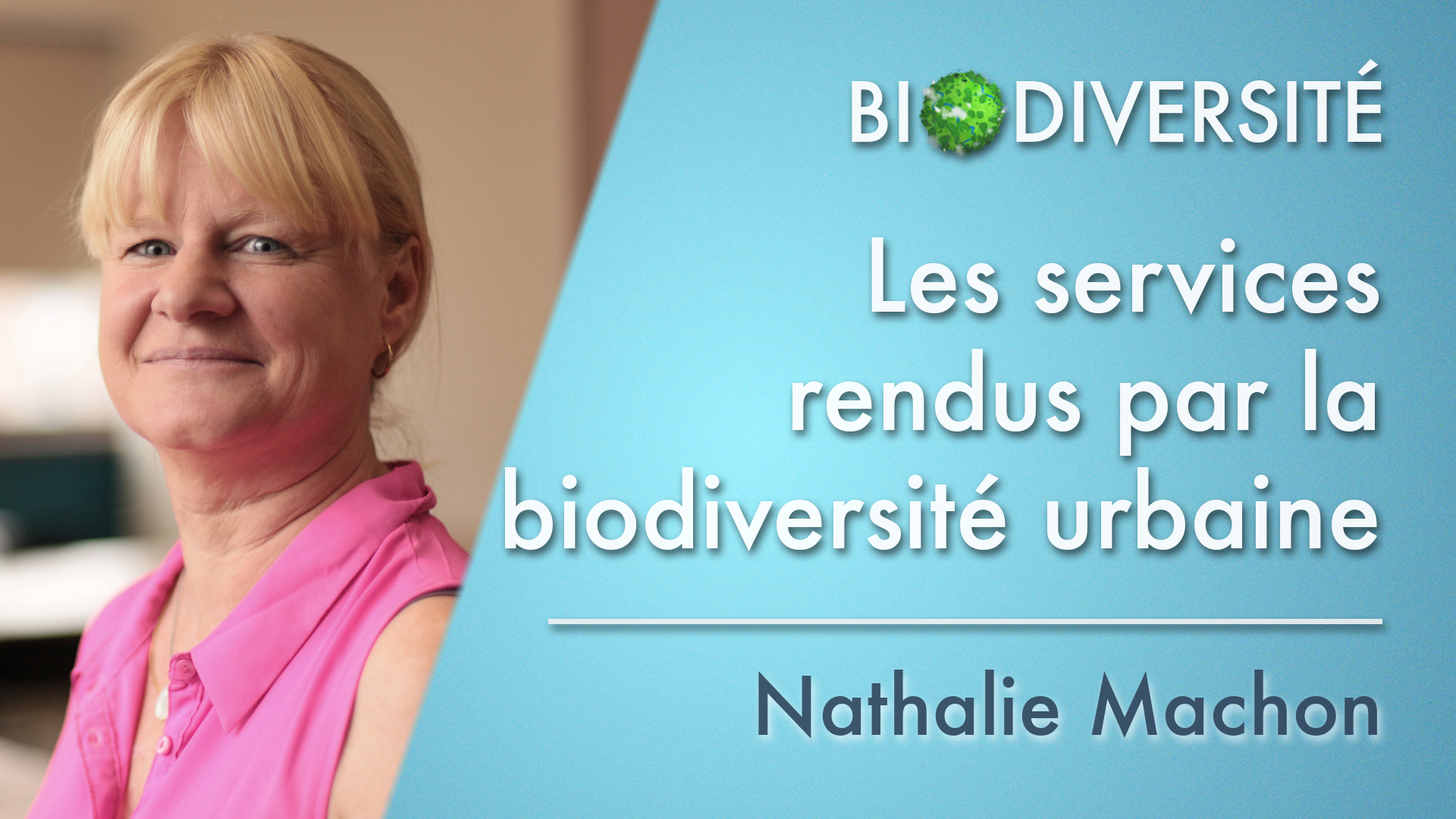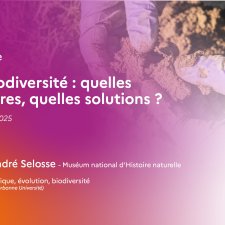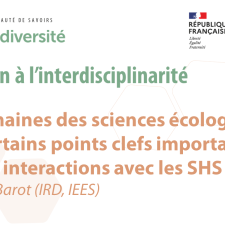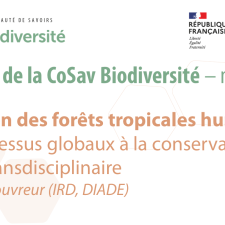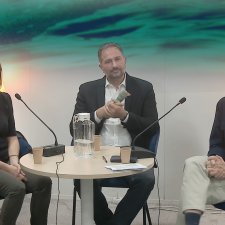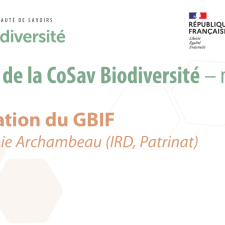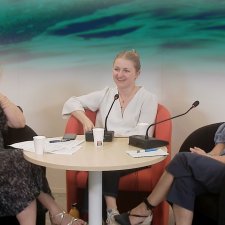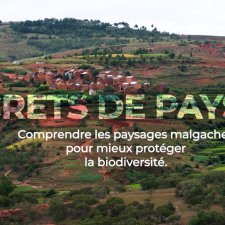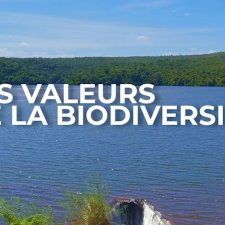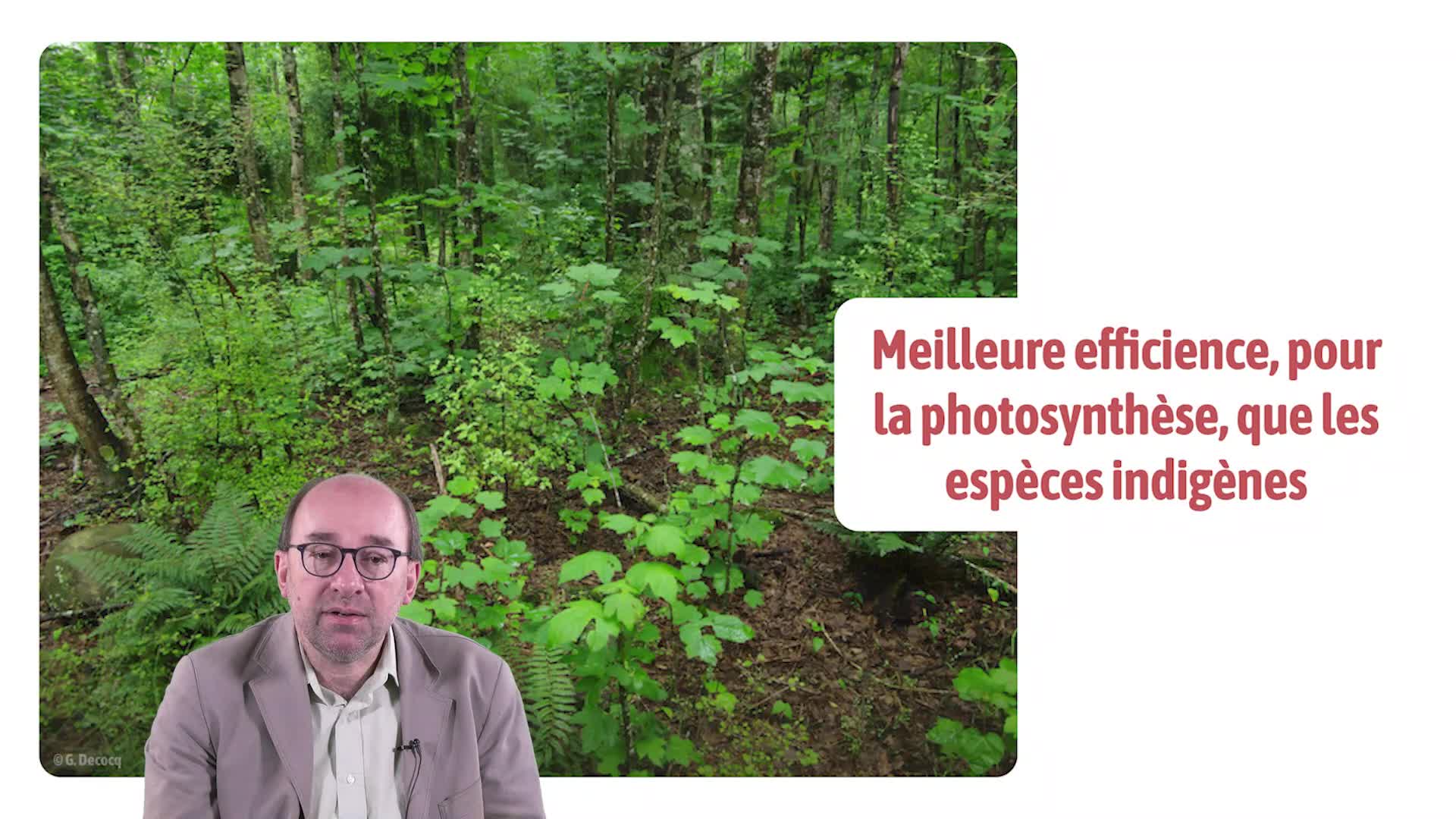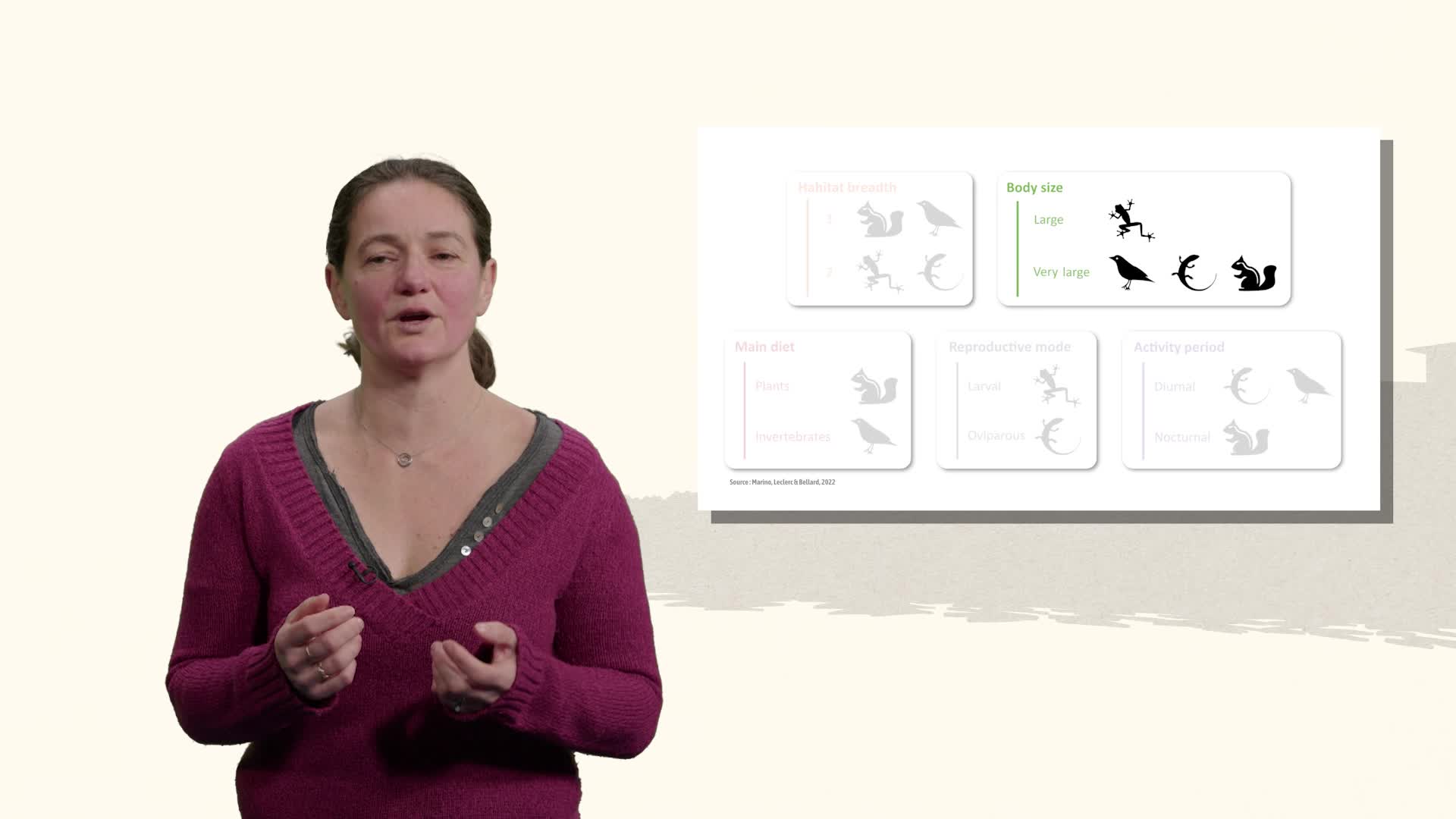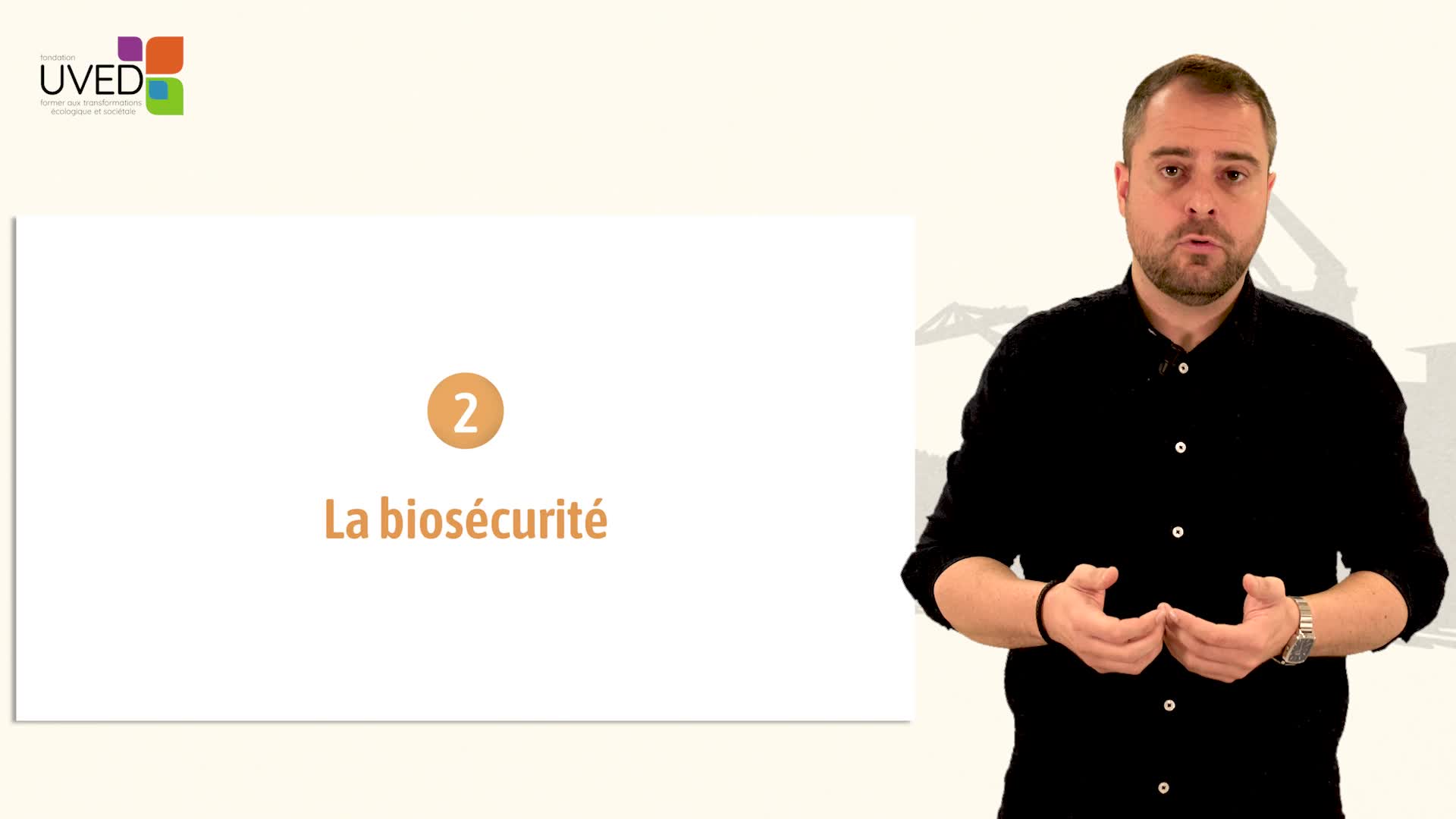Notice
11. Les services rendus par la biodiversité urbaine
- document 1 document 2 document 3
- niveau 1 niveau 2 niveau 3
Descriptif
Nathalie Machon s'appuie sur l'approche des services écosystémiques pour mettre en évidence l'intérêt de préserver et de promouvoir la nature en ville. Service d'approvisionnement, service de régulation, service culturel et enfin service de support avec un large focus sur la pollinisation, en lien avec le programme de sciences participatives Sauvages de ma rue.
Intervention / Responsable scientifique
Dans la même collection
-
Biodiversity and health - Introduction
Bernard Swynghedauw explores with us a still quite unknown biodiversity, which plays an essential role for our development: the microbiota. It consists of all the microorganisms living in our organism
-
EN-9. The urban biodiversity
MachonNathalieWith Nathalie Machon, we will discover the urban biodiversity. She proposes a zoning of cities depending on the extent of the green areas, then she explains the ecological features specific to this
-
EN-12. What determines the quality of urban biodiversity ?
MachonNathalieNathalie Machon presents some factors influencing the quality of the urban biodiversity: climate, soil features, age of the habitat, fragmentation and heterogeneity of the green areas... She concludes
-
EN-10. The functioning of urban animal and plant populations
MachonNathalieNathalie Machon brings data about the functioning of urban animal and plant populations. The cities are environments marked by an important fragmentation of habitats and by constraining
-
Biodiversity and the city - Introduction
The cities still grow all around the world, and are environments which are very modified by humans. The urban living conditions constitute as many constraints as opportunities for the biodiversity. It
-
EN-11. Services rendered by the urban biodiversity
MachonNathalieNathalie Machon uses the approach of ecosystem services to highlight the interest in preserving and promoting the urban nature: supply services, control services, cultural services and support
-
10. Fonctionnement des populations animales et végétales en ville
MachonNathalieNathalie Machon apporte des éléments sur le fonctionnement des populations animales et végétales en ville, milieux marqués par une importante fragmentation des habitats et des conditions
-
12. Qu'est-ce qui conditionne la qualité de la biodiversité dans une ville ?
MachonNathalieNathalie Machon présente quelques facteurs qui influencent la qualité de la biodiversité en ville : climat, caractéristiques du sol, ancienneté de l'habitat, fragmentation et hétérogénéité des espaces
-
9. La biodiversité en ville
MachonNathalieNathalie Machon nous emmène à la découverte de la biodiversité en ville. Elle propose pour cela un zonage de villes en fonction de l'importance des espaces verts, puis précise les caractéristiques
-
Biodiversité et santé - Clip
Premier clip de la cinquième semaine du MOOC UVED Biodiversité. Les villes, qui ne cessent de croître à l'échelle de la planète, constituent des milieux très fortement modifiés par l'homme. Les
-
8. Biodiversité et ville - Clip
Deuxième clip de la cinquième semaine du MOOC UVED Biodiversité. Les villes, qui ne cessent de croître à l'échelle de la planète, constituent des milieux très fortement modifiés par l
Avec les mêmes intervenants et intervenantes
-
EN-9. The urban biodiversity
MachonNathalieWith Nathalie Machon, we will discover the urban biodiversity. She proposes a zoning of cities depending on the extent of the green areas, then she explains the ecological features specific to this
-
EN-12. What determines the quality of urban biodiversity ?
MachonNathalieNathalie Machon presents some factors influencing the quality of the urban biodiversity: climate, soil features, age of the habitat, fragmentation and heterogeneity of the green areas... She concludes
-
EN-10. The functioning of urban animal and plant populations
MachonNathalieNathalie Machon brings data about the functioning of urban animal and plant populations. The cities are environments marked by an important fragmentation of habitats and by constraining
-
EN-11. Services rendered by the urban biodiversity
MachonNathalieNathalie Machon uses the approach of ecosystem services to highlight the interest in preserving and promoting the urban nature: supply services, control services, cultural services and support
-
9. La biodiversité en ville
MachonNathalieNathalie Machon nous emmène à la découverte de la biodiversité en ville. Elle propose pour cela un zonage de villes en fonction de l'importance des espaces verts, puis précise les caractéristiques
-
10. Fonctionnement des populations animales et végétales en ville
MachonNathalieNathalie Machon apporte des éléments sur le fonctionnement des populations animales et végétales en ville, milieux marqués par une importante fragmentation des habitats et des conditions
-
12. Qu'est-ce qui conditionne la qualité de la biodiversité dans une ville ?
MachonNathalieNathalie Machon présente quelques facteurs qui influencent la qualité de la biodiversité en ville : climat, caractéristiques du sol, ancienneté de l'habitat, fragmentation et hétérogénéité des espaces
Sur le même thème
-
Sol et biodiversité : quelles agricultures, quelles solutions ?
SelosseMarc-AndréLe sol a longtemps été géré sans conscience des blessures induites : urbanisation, agriculture intensive, érosion, etc. Pourtant, certaines agricultures ont déjà mis en place des solutions.
-
Présentation des domaines des sciences écologiques et de certains points clefs importants pour les …
BarotSébastienDans cette séance, Sébastien Barot propose une introduction aux grands domaines des sciences écologiques et à leurs fondements épistémologiques et méthodologiques.
-
Évolution des forêts tropicales humides : des processus globaux à la conservation locale transdisci…
CouvreurThomas L.P.Thomas Couvreur présente des travaux de recherche sur les forêts tropicales humides, leur biodiversité au niveau global et les projets de conversation en Equateur
-
Tresser les filets fantômes. Une anthropologie des déchets marins : entre visible et invisible
Le RouxGéraldineBourgeois CostaHenriVidardMathieuSixième rencontre du cycle Océans : héritage commun, défis partagés, qui s'est tenue le 14 octobre 2025, avec Géraldine Le Roux, Henri Bourgeois Costa et Mathieu Vidard au Forum de la FMSH
-
Présentation du GBIF - Global Biodiversity Information Facility - Système Mondial d’Information sur…
ArchambeauAnne-SophieAnne-Sophie Archambeau, Node manager GBIF France, présente le Système Mondial d’Information sur la Biodiversité, programme intergouvernemental et infrastructure de données, créé en 2001, pour
-
Le sauvage dans les aires marines protégées
BricaultPaulineBoemareCatherineLachowskyCarolineQuatrième rencontre du cycle Océans : héritage commun, défis partagés, qui s'est tenue le 17 juin 2025, avec Pauline Bricault, Catherine Boemare et Caroline Lachowsky, au Forum de la FMSH
-
Secret de paysages
CarrièreStéphanieGeninDidierLaquesAnne-ÉlisabethCette vidéo présente une analyse des paysages malgaches. Elle a été réalisée dans le cadre du projet Varuna Science de la Durabilité par des scientifiques malgaches et français, tous membres du
-
Les valeurs de la biodiversité
BlancoJulienPaquetSarahIssu du projet Varuna Science de la Durabilité (Financement AFD et maitrise d'ouvrage Expertise France) développé par l'UMR SENS et ses partenaires malgaches, cette vidéo a été réalisée par Julien
-
Évaluations socio-économiques et environnementales : justifient-elles les grands projets d’aménagem…
LevrelHaroldLa valorisation monétaire attribuable à la biodiversité et la pertinence ou non des outils socio-économiques et environnementaux peuvent mener à des situations de contentieux, comme le cas de l'A69.
-
Les plantes exotiques envahissantes en forêt
DecocqGuillaumeGuillaume Decocq, professeur à l'université de Picardie Jules Verne, discute dans cette vidéo des invasions biologiques en milieu forestier.
-
Prédateurs introduits dans les îles : quels impacts ?
BonnaudElsaElsa Bonnaud, maître de conférences à l'Université Paris Saclay, discute dans cette vidéo des invasions biologiques en milieu insulaire.
-
Prévenir les invasions biologiques
AlbertArnaudArnaud Albert, chargé de mission Espèces Exotiques Envahissantes à l'Office Français de la Biodiversité, discute dans cette vidéo, de la prévention des invasions biologiques.



